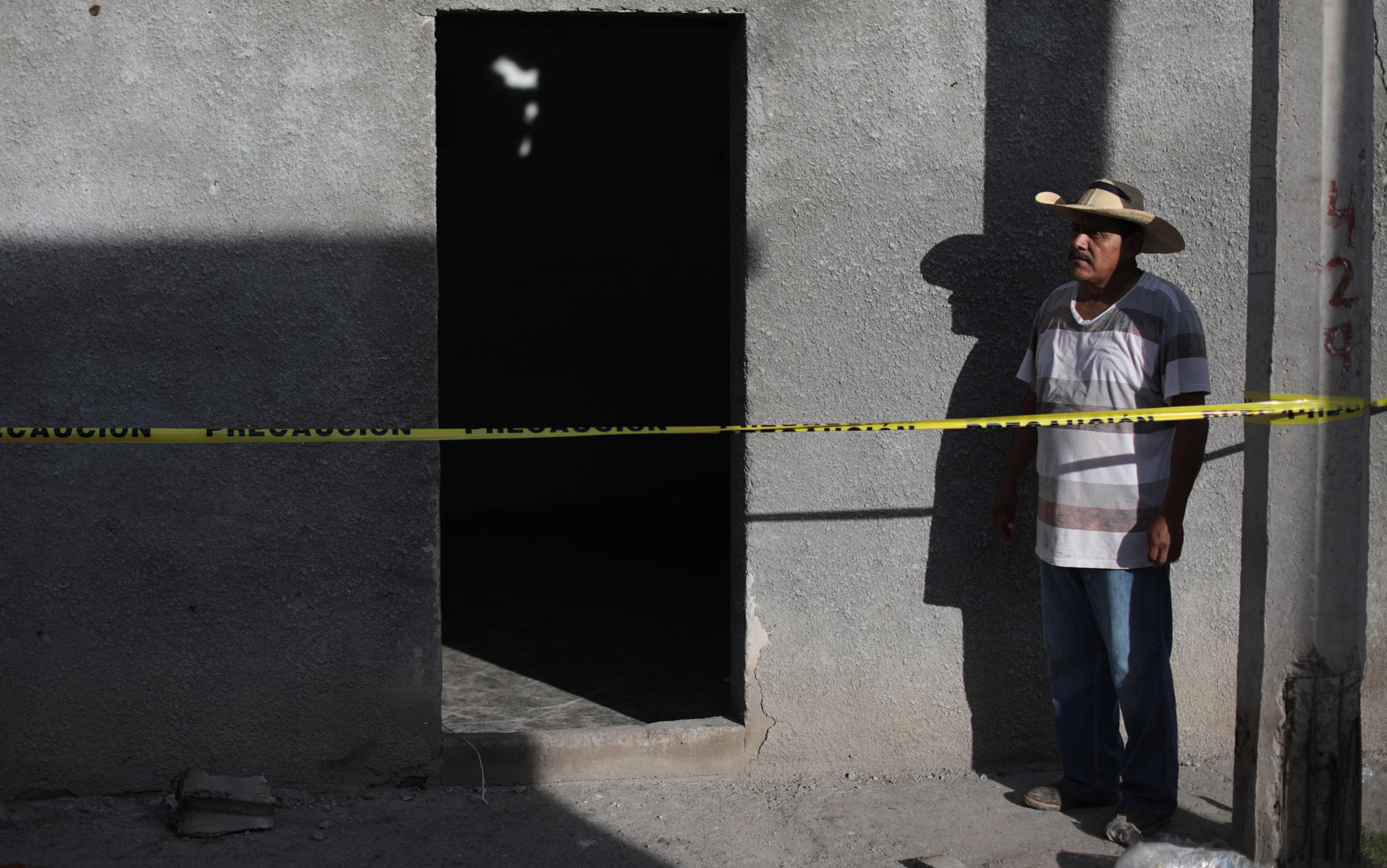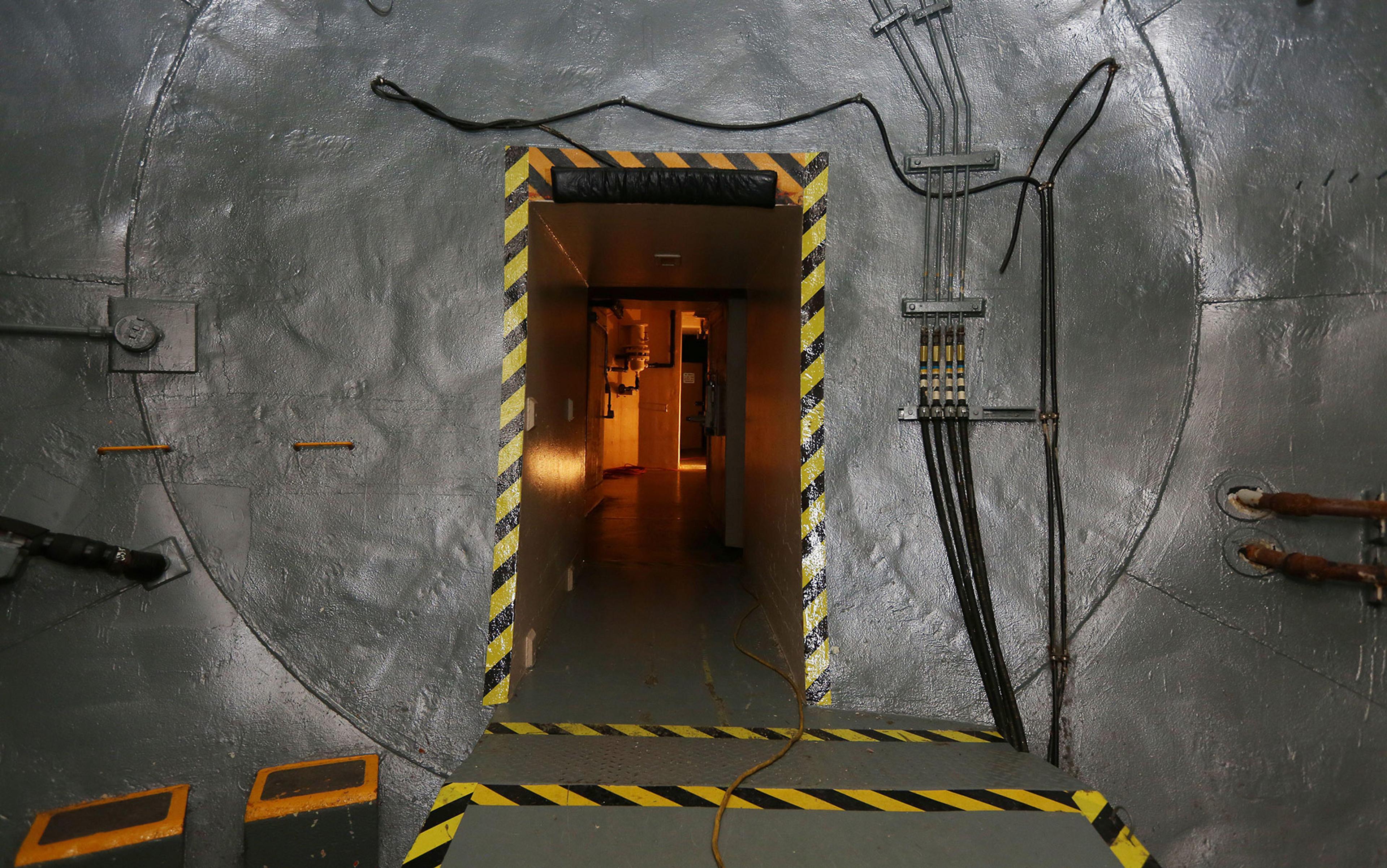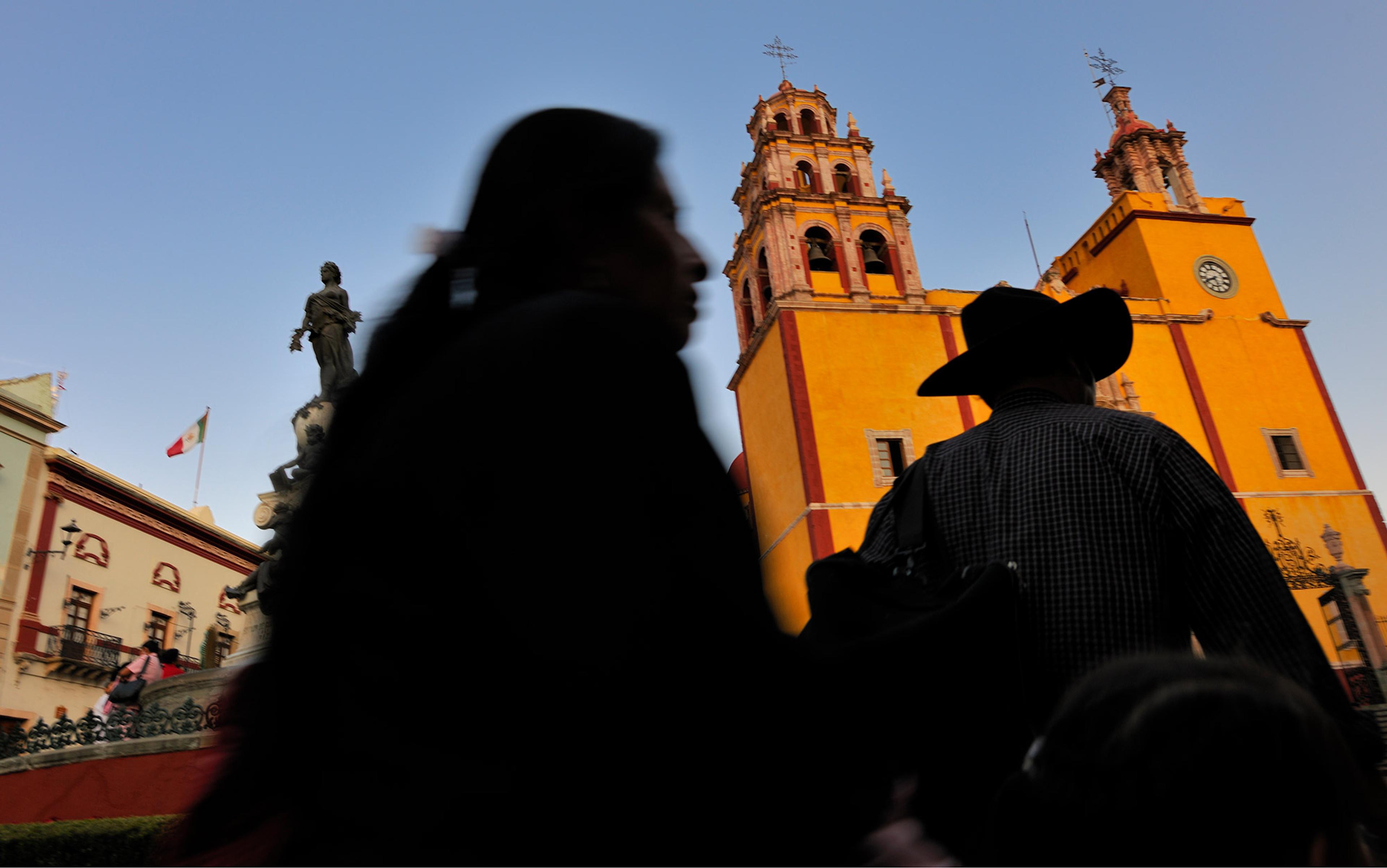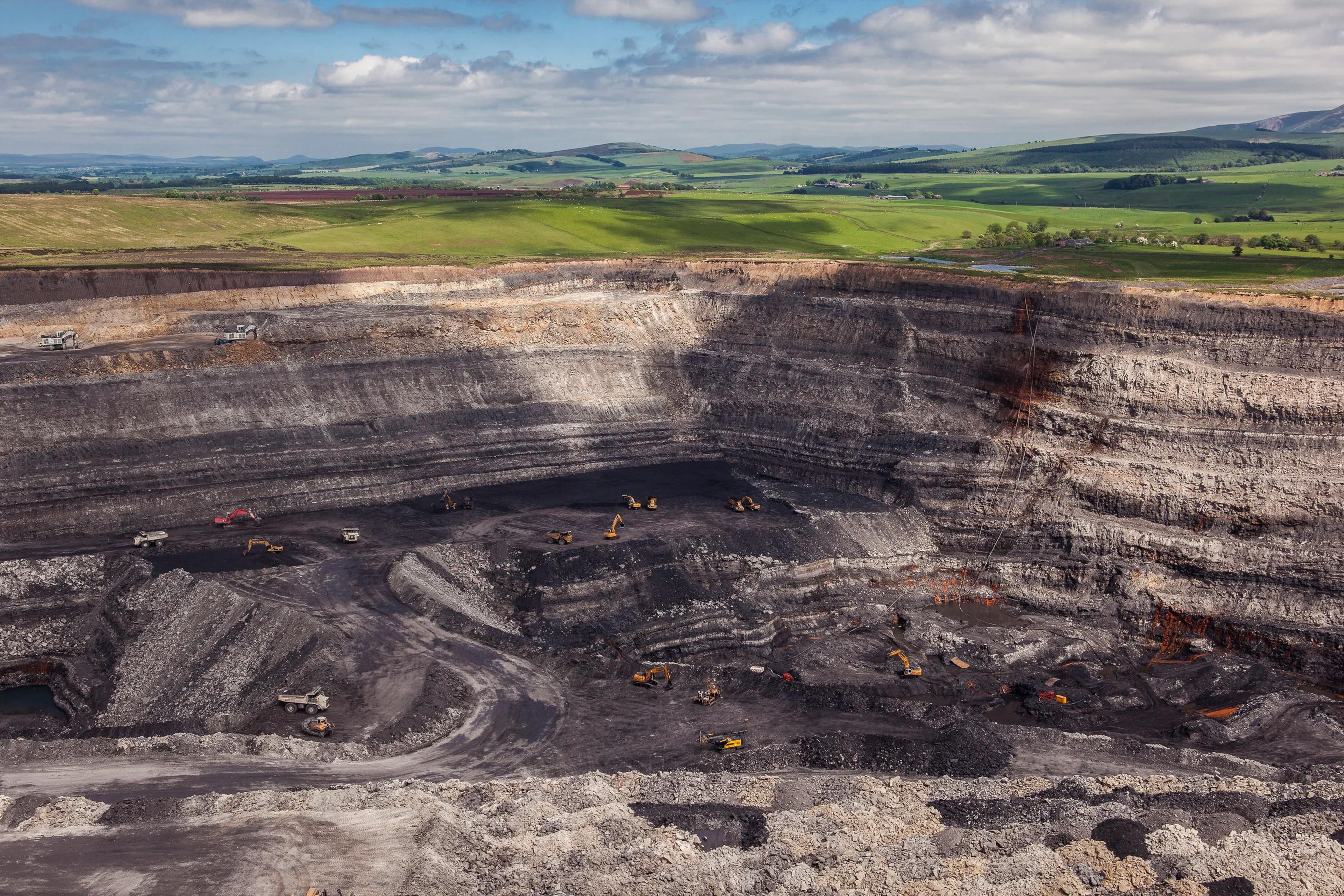Shortly before 7:19am on 19 September 1985, time began to shift in Mexico City. It started with a tremor, emerging from the subduction zone on the Pacific coast, about 300 km southwest of the metropolis. The magnitude 7.4 quake took less than a minute to travel through the surface of southern Mexico before arriving beneath the city. Amplified by soft soils, it reached magnitude 8.1, killing, according to government data, around 10,000 people (the real number is likely much higher – perhaps as many as 40,000 people), and immediately causing 400 buildings to collapse (3,000 would eventually be demolished). Telephone lines went down, sewerage flooded the drinking water, roads into and out of the city became blocked. In the aftermath, up to 700,000 of the estimated 9.1 million residents in the Federal District of Mexico City were left homeless – the state response to the disaster was catastrophically incompetent. And behind it all, as the event recedes into memory, time itself began to take on ever-stranger forms.
During the following years, while city and federal governments grappled with the political fallout, the anniversary of the earthquake became a date on which the state expresses its contrition for the past and demonstrates its preparedness for the future. Every year since 1985, a minute’s silence is held on 19 September, followed by commemorative events, the unveiling of memorials and monuments, the inauguration of new preventative technologies and infrastructures, and the promulgation of risk-reduction legislation – all to ensure that similar disasters are avoided.
These state performances are also met with protests from residents demanding the government be held to account for rampant corruption in the real estate industry, which had led to the substandard construction in many of the collapsed buildings. In the early 1990s, evacuation drills were added to the commemorative events of 19 September. And in the early 2000s, these anniversary evacuations followed the sounding of the city’s Seismic Alert System (Sistema de Alerta Sísmica Mexicano, or SASMEX), which was gradually being implemented across the metropolis. From loudspeakers on street corners, the alert begins as a pulsing, vibrating rhythm that is more eerie than alarming. Over this sound, a cold monotone voice repeats the words ‘Alerta sísmica’. The anniversary becomes a day for declaring that the events of 19 September 1985 will never happen again. It turns the earthquake into something to be memorialised: a historical event.
All that changed in 2017, when the alarm sounded twice on 19 September. Once for the memorial and commemorative evacuations, and then again, two hours later, for a devastating magnitude 7.1 earthquake that killed more than 300 people and levelled dozens of buildings. For the survivors, the coincidence begins to create profound temporal disorientation. How, survivors ask each other, could this be happening again? How could the two most devastating earthquakes in Mexico City’s history strike on the same date?
Some residents told me that when the second alarm sounded, they assumed it was another commemoration of the 1985 earthquake rather than a warning of a new tremor, and so they remained in their buildings until the city began to shake. Fernanda, a woman living in southern Mexico City, told me:
I simply could not believe it… I heard the alert and thought to myself: ‘That’s strange, another drill.’ I did not think: ‘That’s another earthquake.’ I guess I thought that earthquakes would only come [during the other] 364 days of the year.
The apparent impossibility of the coincidence wreaked havoc with the past and present: people ran home to check on their apartments, only to inadvertently run back in time to where they lived in 1985. My friend Eli told me that when the city’s second alert began sounding before the 2017 earthquake, he became ‘atascado’ (meaning stranded, as in jammed, stuck or overwhelmed). ‘Here was the alert saying that an earthquake will happen,’ he told me, shaking his head. ‘But a large part of me is just wondering: Where am I? Is this really happening?’ Another friend, Carlos, described a similar sense of confusion. Earthquakes that were once separate Earthly events were now interconnected ‘reminders that the Earth is always happening to us’. And for Elena, whom I met in 2019 at a protest for still-homeless victims from the 1985 and 2017 disasters, the earthquakes never really ended. Though the tremors stopped, their effects lingered.
The unlikelihood of the coincidence showed that time was never really under human control
These responses all reflect a sensibility that is now common in Mexico City: when the 2017 earthquake struck, time itself shifted a little. Younger people, who ‘remember’ the 1985 disaster only through its annual commemoration, find themselves stranded between the inertia of human-historical time – of clocks, calendars and national anniversaries – and the demands of a looping geological moment. Since then, for many residents, it was as if the present became ceaseless and extensive, and the past and the future stopped being mutually exclusive temporal categories.
A 2020 survey by the newspaper El Financiero showed that Mexico City’s residents were particularly fearful of earthquakes. But, during my time in the city, I noticed that this fear was new and different: after the 2017 event, people had become more afraid of earthquakes. Like people living in other seismic zones, the city’s residents are accustomed to experiencing earthquakes, but the coincidence in 2017 proved too strange to simply consign to Earth’s arbitrary movements. Alongside the increased fear of seismicity, that same survey showed that much of the city is now frightened of 19 September – as a date. In the city’s collective imagination, the earthquakes that have occurred on other dates since 2017 are mere geological flotsam; 19 September, however, is a day that now belongs to Earth. Each anniversary, residents will attempt to either work from home, find open spaces away from buildings, or leave Mexico City entirely. All are worried about being caught somewhere precarious when the next 19 September arrives. And each year, fewer and fewer attend the protests, not because they are losing interest in justice for those who lost their homes in 2017, but because they are terrified of being in the city on the anniversary.
I am an anthropologist who writes about time, the state, and how people experience strange, inconceivable events. During the six years I conducted ethnographic research in Mexico City, I learned a little about how the geological coincidence in 2017 has shifted residents’ experience of time. One change is that the unlikelihood of the coincidence showed that time was never really under human control. Though a geological event can seem to have ended from a human perspective, it may, as Carlos told me, still be ongoing for Earth. In geological terms, the interval between 1985 and 2017 is just an instant. This dilation of human time by Earth becomes especially visceral as each anniversary approaches, and geological forces promise once again to gather human futures into an ongoing Earthly present. Though time might seem to be advancing for humans – the future becoming the present, the present the past – this temporal flow is contained in one duration for Earth: a long geological now. In the temporal imagination of Mexico City’s residents, it’s as if 19 September has become three things: a date on the calendar, a reminder of events in the City’s history, and a marker of the inhuman forces that have ravaged Earth in perpetuity. For many residents, the categories of past, present and future have become subject to the whims of a capricious Earth.
Opening a geology textbook unleashes a torrent of metaphor and analogy in which Earth appears to live and breathe. Slopes are described as ‘retreating’, mountains can be ‘revived’, streams ‘defeated’, plains ‘undulating’, walls ‘hanging’, glaciers ‘pulsating’ and rocks ‘fatigued’. As a descriptive science, noticing deep-time processes that appear static in human lifetimes – like the movements of tectonic plates – requires a turn to the metaphoric. Earthly metaphors seem to provide a sense of stability in our everyday lives that liquid metaphors can’t. We ‘lay the groundwork’ for plans; we seek a ‘sure footing’ or a ‘steady foundation’ on terra firma. Perhaps this sense of stability is why seismology offers such potent metaphors for massive, sudden or irreversible change. We might hear about ‘tectonic shifts’ in values and meanings, or entrenched political ‘fault lines’, or of an event’s inevitable ‘aftershocks’. This last metaphor, aftershock, is particularly malleable. It is used to describe post-traumatic stress disorder, interest rate rises, the fallout of the COVID-19 pandemic, and many other moments in which changes produce lasting effects. ‘Aftershock’ is a metaphor that locates an event by pointing to its consequences, using a linear imagination of time to move from cause to effect. But looking at the experience of aftershock sequences can open our imaginations to how time’s coherence is contingent upon the stability of an erratic Earth.
The term ‘aftershock’ comes from the Japanese seismologist Fusakichi Omori, who realised in 1895 that three major Japanese earthquakes – in Kumamoto (1889), Nōbi (1891) and Kagoshima (1893) – were in fact a single, staggered event. By identifying their contiguity, the similarity of their wave forms and other factors, he positioned these discrete events into an ongoing process that became known as the ‘aftershock sequence’. Omori’s Law, and Tokuji Utsu’s later amendments (known collectively as the Omori-Utsu Law) state that, after a shallow earthquake, the parts of the fault that slipped will readjust causing connected earthly movements, but over time, the probability of those events will diminish. In concrete terms, the likelihood of an aftershock the day after an earthquake will be half what it was the day of the earthquake, around one-tenth by the 10th day, and so on. In the mid-20th century, the Gutenberg-Richter Law added that the higher the magnitude of the mainshock, the more frequent and stronger are its aftershocks. Importantly, though aftershock timings, numbers and locations broadly conform to these statistical rules, they remain stochastic.
Paying attention to different forms of aftershock transforms the linear sequence of events into something strange and less determinate. Context renders metaphor uncanny. For instance, an important variable is the speed with which tectonic plates move. Along the San Andreas Fault, which moves around 37 mm per year, aftershock sequences tend to end about 10 years after an earthquake. In the New Madrid seismic zone of the eastern United States, however, tectonic plates move at close to 0.2 mm per year, so any earthquake that happened there before 2012 is considered an aftershock of an earthquake from 1812.
What might be ‘after’ for the city might still be ‘before’ for Earth
In the 14 months after the 1891 Nōbi earthquake in Japan, 3,090 aftershocks were recorded; by 1975, three to four still registered each year. Some seismologists theorise that the magnitude 7.6 earthquake that struck Chiloé Island in Chile in 2016 was an aftershock of the magnitude 9.5 Valdivia earthquake in 1960. Moreover, mainshocks will often be preceded by foreshocks. The 1960 Valdivia earthquake was preceded by a magnitude 8.1 earthquake 33 hours prior; likewise, the magnitude 9.2 Sumatran earthquake of 2004 might have been presaged by a magnitude 7.6 foreshock in 2002. It’s not hard to imagine that a foreshock of that severity would have been considered a mainshock until a larger earthquake occurred. For example, on 24 August 2016, the municipality of Accumoli in Italy was struck by a magnitude 6.2 earthquake. Thousands of aftershocks followed it, hundreds each day, some up to magnitude 5.5, with a generalised decay in frequency and force. Then, on 30 October, a magnitude 6.6 earthquake struck the region – an aftershock that repositioned the August mainshock as a foreshock.
An aftershock sequence has a slippery temporality, despite its use as a metaphor denoting a linear succession of events. The relationship between foreshock, mainshock and aftershock only becomes clear long after the extended event has died down, sometimes at a scale that troubles conceptions of causality. This form of seismic time is not knowable through the human experience of a single seismic event. Instead, it is a geological process instituted within an earthquake that endures beyond it, distributed across years or decades. Under such conditions, ideas like ‘past’ and ‘future’ are shifting, contingent categories. One cannot be sure if their ‘present’ is before or after a mainshock – before or after (or within) the geological ‘present’ of Earth.
This describes how many people have experienced the uncanny geological temporality of Mexico City. Though the 2017 earthquake was not an aftershock of the 1985 tremor, the unpredictable temporality of an aftershock sequence, particularly the notion of an uncertain ‘present’, is a means of understanding residents’ sense that geological time had displaced the time of Mexico City. What might be ‘after’ for the city might still be ‘before’ for Earth.
I was in Mexico City in 2021, in the weeks before 19 September. As the date approached, the sense of an uncertain present began to return once again. While travelling through the city, overhearing conversations or talking with friends, I began to get a sense of these growing temporal anxieties. Some residents began to worry that this 19 September would be Mexico City’s last.
Shortly before 9pm on 7 September, as I sat reading in the window of my apartment, with the buzz of fat summer raindrops filling the street below, I heard the speakers of the city’s early warning system suddenly crackle to life. The other residents and I ran downstairs to await the coming earthquake, which arrived 20 seconds or so later. The electricity immediately cut out as a magnitude 7.1 quake, with long, rolling waves, turned the city’s surface to a piece of fabric billowing in a gentle breeze. It lasted for around two minutes. Fortunately, despite its magnitude and duration, the earthquake caused little damage. But, climbing back to our apartment, I receive a text message from a friend: ‘No way, it’s September 7, again.’ Four years earlier, the earthquake of 19 September 2017 had been prefigured by an earthquake on 7 September. The tremor we had just felt began to appear like a geological promise: a confirmation that Mexico City was headed for another disaster on 19 September 2021. We had 12 days.
The odds were so low that an earthquake would appear on the same date in 1985 and 2017 that some residents felt they had become exposed to a timescale that would make such geological coincidences possible. The unlikely becomes inevitable, precisely because of its improbability. And so, another earthquake was expected to arrive on 19 September 2021, and every other year since the 2017 coincidence.
Residents were convinced that the city’s repeating geological loop had initiated
Back in 2018, when the first anniversary of the 2017 quake approached (and the 33rd anniversary of 1985), a cartoon by Victor Solís was shared widely on social media, particularly in the WhatsApp group chats I shared with earthquake victims and their advocates. (Since then, Solís says, it ‘religiously wanders and arrives to him via WhatsApp on this day each year.’) The cartoon shows a man in pyjamas praying at the side of his bed on the evening before 19 September. The text at the base of the image, the man’s prayer, translates as ‘… and that tomorrow would be nothing more than just the drill.’
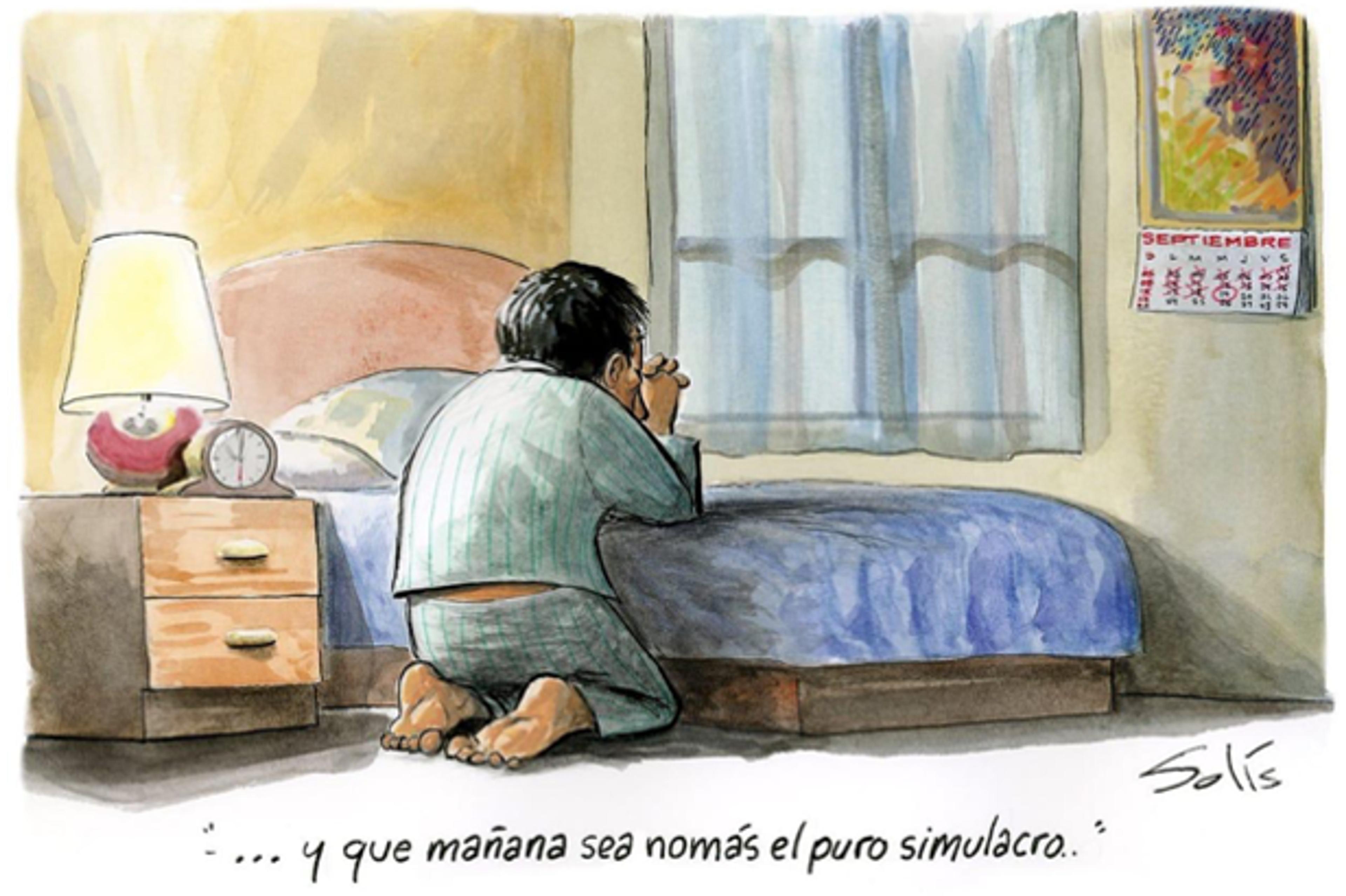
This feeling underpinned the 12 days of expectation in 2021. Shortly after I received the message from my friend alerting me to the similarities with the 2017 earthquakes, a rumour went viral across Mexican social media reminding the city of its geological history. A common version of the message reads:
Do you want to scare yourselves? On 7 September 1985, there was a strong earthquake in Mexico City; on 19 September, an earthquake gravely damaged the heart of Mexico City. On 7 September 2017, Mexico City trembled hard; then, on 19 September, another earthquake shook Mexico. And today, 7 September, it just trembled very hard. Strange coincidences.
Residents were convinced that the city’s repeating geological loop had initiated. During the ominous 12 days between 7 and 19 September, Mexican seismologists appeared for interviews on television and in newspapers, reminding the city that Earth cares nothing for human calendars. Experts do this each September, but in 2021 they went so far as to publish seismograms showing unequivocally that there was no geological relationship between the dates 7 September and 19 September in 1985. Contrary to the rumours, there was no significant earthquake on 7 September 1985. And yet, despite the reassurances, the geological coincidence seems bound to return because Mexico City is in an ongoing geological present: after a before, but still before an after.
This expectation sometimes transforms anxiety into outright hysteria and panic. Upon hearing commemorative sounding of Mexico City’s earthquake alarm, some residents have nervous breakdowns, throw themselves out windows, or fall down stairs. Each year since 2019, the city’s governor has announced the number of injuries that the commemorative evacuation causes each anniversary. The double anniversary is so heavy with Earthly time and human history that it is as if, until 2017, 19 September was a date on which earthquakes couldn’t happen, but after 2017, it became a date on which they had to.
We wait nervously throughout the 12 days of anticipation in 2021. Ultimately, an earthquake doesn’t strike on 19 September. But relief is short-lived. Unfortunately for Mexico City, there is a 19 September every year, an annual promise that the city’s ‘after’ has yet to begin. We begin waiting and expecting. Will it happen again?
In an earthquake, the time of Earth and the time of human experience intersect. As John McPhee suggests in Annals of the Former World (1998), thinking at these two timescales – ‘one human and emotional, the other geologic’ – induces a form of temporal schizophrenia because they are ‘so disparate’. Generally, the experience of geological time at a day-to-day level involves an abstracted, expanded frame of reference that demands leaps of imagination: Picture seeing emptiness where Mt Fuji once stood; envisage the landmass now known as India colliding with the continent of Asia; imagine the Himalayas swelling up. But in Mexico City post-2017, the peculiar convergence of these two timescales provokes a more visceral sense of Earthly forces that would otherwise remain abstract. This feeling of a deep-time present becomes especially acute on the most geologically unstable date in Mexican history.
On 19 September 2019, I stood alongside earthquake victim advocacy groups in Mexico City while we waited for the commemorative evacuation drill. When the alert began sounding, many around me put their fingers in their ears to drown out the robotic voice blandly repeating ‘Alerta sísmica’ over the ghostly, pulsating tone of the alarm. As if the early warning alert itself were somehow causal of earthquakes, a woman said under her breath: ‘Que se quede tranquila la tierra hoy’ (‘That the earth would remain tranquil today’) and we murmured our agreement until the alert drowned us out.
One explanation of these fears of 19 September might be that residents are experiencing a kind of seismic PTSD – a fearful response to a date marked by the human grief and suffering that a volatile Earth can deliver. This may be true to some extent, but understanding the experience of being ensnared in geological time as a form of trauma is insufficient. ‘Trauma’ can psychologise experiences, obscuring the important role of structural and environmental factors. Trauma can also be an elastic concept, capable of describing the experiences of – as Ruth Leys points out in her 2000 book – both the attendees of a wedding bombed by a drone, and the pilot who did the bombing. But most importantly, trauma has a linear temporality, especially in experiences of post-traumatic stress, in which a past event determines the future. This linear sense of time and history can reduce contemporary experience to an epiphenomenon of the past, which risks discounting the strangeness of the present in Mexico City. To view residents’ fears as seismic PTSD would also require overlooking what happened an hour or so after the commemorative alarm sounded on 19 September 2022.
These temporal geometries contort human history into strange and terrifying shapes
When the third 19 September earthquake happened, and the ground began to tremble, the city lost power. The magnitude 7.7 tremor was felt in 12 states, damaging buildings and killing two people. It was relatively minor compared with the earthquakes of 1985 and 2017 but, as the city shook for a third time, the temporality of trauma shifted: fears and anxieties that might have appeared to result from past disasters could no longer be considered ‘post-traumatic’ because the ‘post-’ had yet to begin. Human time was being swallowed by an abyssal geological present.
I ran to check on my apartment, then went to a cantina. With the power out, the bartenders were taking beers from their fridges and putting them in big buckets of ice on the street. Workers, holidaymakers, street vendors and police officers all sat on the footpath, drinking warm beer, and theorising what the hell was happening to Mexico City. There was a 0.026 per cent chance that the 2017 earthquake would happen on the anniversary of the 1985 disaster; we would later find out that the 2022 earthquake had about a 0.000751 per cent chance of happening. But for everyone I spoke with, its unlikelihood guaranteed that it would happen. The improbable was not impossible, least of all in Mexico City. I heard countless theories that explained the tremor: the city was in an Earthly loop, simply beyond human comprehension; residents’ fears of the date somehow manifested the earthquake; millions of people stomping out of their buildings during the commemorative evacuation upset the tectonic plates. But, above all, held the idea that Mexico City’s residents were justified in their fears: 19 September no longer belonged to humans, and the city had been set adrift in the time of Earth. Though the three 19 September tremors are not formally defined as an aftershock sequence, for some residents, it feels as if ‘after’ will never begin.
We are currently in a moment described as ‘the Anthropocene’, an epoch in which the actions of some humans register at the geological scale through traces of anthropogenic matter, such as nuclear radiation, plastics and carbon emissions. From this vantage, the future becomes an aftereffect of human action. But Mexico City, with its looping geology and its long 19 September, points toward a different relationship between the human and the geological, in which time itself is an effect of Earth.
For the city’s residents, the disaster of 1985 is in the past. The 2017 earthquake is in the past. Even the 2022 event is now in the past. But as these discrete events slip into human memory, all three are folded into Earth’s geological present. In Mexico City’s geological now, the relationship between past, present and future is not preordained, and these temporal geometries contort human history into strange and terrifying shapes. Mexico City’s time is dislocated, its residents stranded after what was prior but still before what might yet come. And 19 September is now, like its own axis of time, a yearly reminder that humans might not be in charge of when ‘after’ begins.
